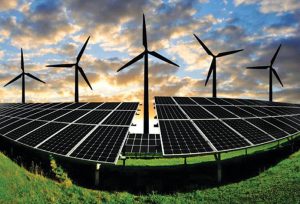Investment in renewable energy will need to hit $1.3 trillion a year by 2030 for the world to be on track to limit global temperatures set out in the Paris climate accord.
That’s the latest assessment from the International Energy Agency (IEA), which revised up the figure from $1 trillion in a previous forecast. While the amount is more than triple the $390 billion spent annually on renewables today, it’s not unprecedented for the energy industry. The figure would match a record for investment in fossil fuels set in 2014.
Decarbonising electricity sector is one of the cheapest and easiest ways to cut emissions. While costs for solar panels and wind turbines have increased recently because of higher commodities prices and supply chain bottlenecks, they’ve become more competitive with even more expensive fossil-fuel alternatives.
Keeping global warming to less than 2 degrees Celsius will require wealthy countries to effectively eliminate emissions from the power sector by 2035, followed by developing economies in 2040, the IEA said in its World Energy Outlook.
To get there will require a massive buildout of renewables. And every year construction lags behind target means even more spending will be required later to stay on track. Current policies put the world on a path to warm by 2C around 2060, with temperatures continuing to rise from there, the IEA said.
Still, there is some good news. Already-announced expansions to global solar equipment manufacturing capacity would provide enough material to expand the sector enough to reach the IEA’s 2030 capacity target, which is more than five times today’s level.
—Bloomberg
 The Gulf Time Newspaper One of the finest business newspapers in the UAE brought to you by our professional writers and editors.
The Gulf Time Newspaper One of the finest business newspapers in the UAE brought to you by our professional writers and editors.
